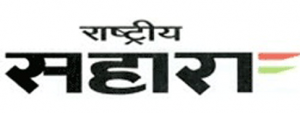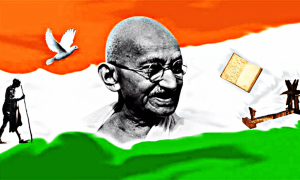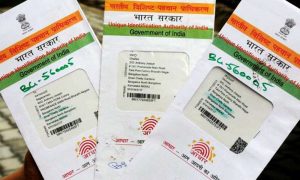News Clipping on 08-10-2018
![]() Date:08-10-18
Date:08-10-18
मुकवेगे और मुराद को नोबेल शांति पुरस्कार
संपादकीय
कांगो के चिकित्सक डेनिस मुकवेगे और यजीदी कार्यकर्ता नादिया मुराद को विश्वभर के युद्धग्रस्त क्षेत्रों में यौन हिंसा के खिलाफ काम करने के लिए 2018 के नोबेल शांति पुरस्कार के लिए शुक्रवार को चुना गया। नोबेल समिति की अध्यक्ष बेरिट रेइस एंडरसन ने यहां नामों की घोषणा करते हुए कहा कि यौन हिंसा को युद्ध के हथियार के तौर पर इस्तेमाल करने पर रोक लगाने के इनके प्रयासों के लिए इन दोनों को चुना गया है। उन्होंने कहा, ‘‘ एक अति शांतिपूर्ण विश्व तभी बनाया जा सकता है जब युद्ध के दौरान महिलाओं, उनके मूलभूत अधिकारों और उनकी सुरक्षा को मान्यता और सुरक्षा दी जाए।’’ उन्होंने कहा कि एक चिकित्सक हैं और एक इस्लामिक स्टेट के यौन उत्पीड़न का दंश झेल चुकी महिला हैं, दोनों वैश्विक अभिशाप के खिलाफ संघर्ष का उदाहरण हैं जो केवल एक देश में नहीं बल्कि बड़े पैमाने पर है और मीटू अभियान इसे साबित करता है।
मुकवेगे (63) को युद्ध प्रभावित पूर्वी लोकतांत्रिक कांगो गणराज्य में यौन हिंसा और बलात्कार पीड़ित महिलाओं को हिंसा और सदमे से बाहर निकालने के क्षेत्र में दो दशक तक काम करने के लिए चुना गया है। मुकवेगे ने 1999 में दक्षिण कीव में पांजी अस्पताल खोला था जहां उन्होंने बलात्कार पीड़ित लाखों महिलाओं, बच्चों और यहां तक कि कुछ माह के शिशुओं का भी उपचार किया है। इन्हें ‘डॉक्टर मिरैकल’ के नाम से भी जाना जाता है। इसके साथ ही वह युद्ध के दौरान महिलाओं के खिलाफ हिंसा के मुखर विरोधी हैं। मुकवेगे के अलावा समिति ने मुराद को भी नोबेल शांति पुरस्कर के लिए चुना है। मुराद ईराक से हैं और यजीदी समुदाय से ताल्लुक रखती हैं। आतंकवादी संगठन इस्लामी स्टेट ने उन्हें 2014 में अगवा कर लिया था। आंतकवादियों के चंगुल से फरार होने से पहले तीन महीने तक इन्हें यौन दासी बना कर रखा गया था।
नार्वे की नोबेल समिति ने कहा कि मुराद ने अपनी पीड़ा को बयान करने का असामान्य साहस दिखाया है। समिति ने कहा कि मुराद ने उस सामाजिक आचरण को मानने से इनकार कर दिया जिसमें महिलाओं से चुप्पी साधने और अपने ऊपर हुए जुल्म पर शर्मिंदगी महसूस करने की उम्मीद की जाती है। इस घोषणा के होते ही कांगो गणराज्य में पंजी अस्पताल के कर्मचारी खुशी से उछलने लगे हालांकि मुकवेगे उस वक्त सर्जरी में व्यस्त थे। स्वीडन के विजिटिंग डॉक्टर एलीनोर एडलरोथ ने स्वीडन की समाचार समिति टीटी से कहा, ‘‘जब डॉ मुकवेगे को यह खबर मिली उस वक्त वह सर्जरी कर रहे थे, लेकिन वह इस खबर से खुश हैं।’’उन्होंने बताया, ‘‘उन्हें छठवीं बार नामित किया गया था। लेकिन उन्हें लगता था कि वह कभी नहीं जीतेंगे।’’संयुक्त राष्ट्र ने नोबेल पुरस्कार को ‘‘शानदार घोषणा’’ बताया।
वहीं यूरोपीय संघ के अध्यक्ष डोनाल्ड टस्क ने दोनों विजेताओं को उनके साहस, मानवता और दया के लिए उनकी सराहना की। जर्मनी की चांसलर एंजला मर्केल के प्रवक्ता स्टीफन सेबर्ट ने उन्हें दो बेहतरीन पुरस्कार विजेता बताया।रेइस एंडरसन ने कहा कि डेनिस मुकवेगे और नादिया मुराद दोनों ने युद्ध अपराधों के खिलाफ लड़ाई छेड़ने और अपनी जान की परवाह किए बिना पीडि़तों के लिए न्याय की मांग की है।
![]() Date:08-10-18
Date:08-10-18
A Dam Smart Move On Water And Safety
ET Editorials

It is welcome and significant that the Centre is leveraging multilateral funding to shore up resources for maintenance, safety and revamp of dams and attendant irrigational assets. The government has approved revised costs of Rs 3,466 crore for the ongoing Dam Rehabilitation and Improvement Project (DRIP) for 198 large dam projects nationwide, with over threefourths of the funding provided by the World Bank. Water storage and supply infrastructure must rise to the top of the political agenda, especially building the last mile links whose absence makes huge investments infructuous.
The projections suggest rising and worsening water stress nationally. We need an annual Water Report, on the lines of the annual Economic Survey, for focused policy attention on India’s turbulent water sector, confronting global warming and changes in rainfall patterns. India now has 5,264 large dams completed and another 437 large dams under construction, and yet irrigation coverage remains thoroughly suboptimal. Evidently, command area development and holistic management of water resources have been deficient with no dependable water resource information system in place.
Better funding for dam rejuvenation is warranted now that about 200 dams are a century old. Phase-II of DRIP would reportedly cover another 700 dams and cost Rs 7,000 crore. The way ahead is to modernise safety and oversight institutions and systems for large dams nationally. The Dam Safety Bill, 2018 provides for a National Dam Safety Authority. We do need norms for reservoir silt management and regular surveillance and monitoring with modern sensors, instrumentation and related information technology systems. The policy objective needs to be not just to prevent dam failure but to optimise irrigation potential.
Date:08-10-18
CAD Worries: Not By More Import Curbs
Mind the fisc, mine more coal, boost exports
ET Editorials

Finance minister Arun Jaitley did the right thing by reassuring the investor community that the government is mindful of the current account deficit (CAD) and would maintain fiscal discipline. He has promised yet more measures to contain CAD. We would urge caution. It is not a good idea to selectively raise import duties or levy quantitative restrictions on specific items.
The RBI is already doing its bit to rein in CAD. By refusing to hike interest rates at a time of downward pressure on the rupee, it has signalled that further depreciation of the rupee would be quite in order. That is the surest way to curb imports across the board, as a dearer dollar would make all imports more expensive than before.But there are a couple of things that the government can and must do on this front. It is not just crude that is padding up the import bill.
There is also coal, which the Monetary Policy Committee specifically referred to in its statement. The captive coal mines, whose allocation the present government had persuaded the Supreme Court to cancel soon after assuming office, are lying defunct for the most part. If those who have won the mines in auction are not interested in operating the mines, the government should take them back and re-allocate the mines that had been operating to their previous allottees, so as to step up domestic production and reduce coal imports.
The whip should be cracked on Coal India, whose continued monopoly over domestic coal is a disgrace and a contributory factor to CAD stress. Next, the government should disburse, post-haste, all the GST refunds claimed by exporters from a contingency fund, unjustified claims being clawed back with penal interest. Raising export volumes is more vital than curbing imports. Holding down the fiscal deficit is something the government alone can do. The gross public sector borrowing requirement, including of the states, is what matters, not just the Centre’s deficit. Smart policy, such as freeing up oil marketing to competition, must figure more than populist give-aways, in the run-up to the elections.
 Date:08-10-18
Date:08-10-18
Nobel Crusaders
Nadia Murad and Denis Mukwege say, stop the use of rape as a weapon of war
TOI Editorials
A decade ago UN recognised that rape can constitute a war crime and a constitutive act of genocide. This year’s Nobel peace prize has been awarded to two exceptional individuals for their fight to end the use of sexual violence as a weapon of war. Denis Mukwege is a doctor who has spent decades treating rape survivors in the Democratic Republic of Congo, where a long civil war has repeatedly witnessed the horror of mass rapes. Nadia Murad is herself a survivor of sexual war crimes, perpetuated by IS against the Yazidis. Today she campaigns tirelessly to put those IS leaders in the dock in international courts.
When IS militants attacked her village in northern Iraq, they first killed many of the older women and men in her community, including her mother and six of her brothers and stepbrothers, before bussing her to Mosul, where she and the other young women and children abducted along with her, were brutalised as sex slaves. Murad eventually escaped, only to recount her suffering again and again. She underlines that her abduction was no “spontaneous decision made on the battlefield by a greedy soldier.” IS planned it all, even its propaganda magazine discussed sex slaves to lure new recruits. This was part of a military strategy against Yazidis, ultimately aimed at eliminating them altogether.
The fact that the peace laureates come from two different nations underlines that this problem has been widespread, from Rwanda to Myanmar. And the fact that the prize is shared by a man and woman underlines that both sexes have been victims, and both must work together to end the use of rape as a weapon of war.
Date:07-10-18
Why the Sabarimala verdict is an act of social engineering
Swapan Dasgupta
The Supreme Court verdict in the Sabarimala temple case has created profound disquiet in southern India. Contrary to cosmopolitan wisdom that viewed the majority judgment as a leap forward for gender equality, there have been protests by women against the right of unrestricted entry to the shrine. What is being dubbed the #PreparedToWait campaign may well be debunked in some circles as evidence of either ‘false consciousness’ or a short-lived conservative backlash. But the protests have gathered enough momentum to force political parties to demand both a judicial review and a reaffirmation of Sabarimala’s traditions by the legislature. A larger battle, it would seem, has just begun.
Changes in religious practice are an ongoing process. Most Hindu shrines, especially those associated with the Shakta traditions, have over the decades abandoned animal sacrifice. In many temples, it is no longer considered obligatory to have worship conducted by Brahmin priests. There are instances— admittedly few— of women priests conducting Hindu marriages.
Apart from rituals, the changes have embraced religious custom. Backed by legislation, Hindu temples no longer have caste restrictions on entry and worship. The Supreme Court has mooted a proposal to even allow the entry of non-Hindus to the Jagannath temple in Puri. Traditional Hindu laws have yielded way to gender equality in matters of inheritance and society has accepted it without fuss. Indeed, traditional discriminatory practices — while still not totally eradicated — are on the retreat in Hindu society.
Thanks to the convergence between everyday religion and the media, the lived Hindu religion is evolving very rapidly. With greater prosperity, traditional pilgrimages have been embellished by organised tourism. A combination of Bollywood and media has seen localised customs such as Karva Chauth and fasting on Tuesdays acquire a pan-Indian character. The Santoshi Ma cult was entirely a celluloid creation. Ganesh has emerged as a national deity, with an appeal cutting across class and geography. In eastern India, community Durga Pujas have become more widespread and certainly more opulent. Although the maha aartis that were fleetingly witnessed in Mumbai in the wake of the 1992-93 riots haven’t caught on, today’s Hinduism is definitely more communitarian, more participative and definitely less inclined to exclude people on grounds of theological or other schisms. In the modern temples that have mushroomed in urban India, worship of Krishna, Shiva and other deities is conducted side by side and harmoniously, often by the same set of priests. At the onset of the 20th century, this would have been unimaginable.
It is important to remember that most of the socio-religious changes in the Hindu communities aren’t only due to legislation. Certainly, changes in the law played an important role in edging out child marriage, according inheritance rights to women and regulating the terms of marriage and divorce. But these are issues that any modern state has an obligation to regulate. Apart from the legal strictures against caste-based oppression and the rights of all castes to worship in temples, the shifts in the religious life of Hindus have seamlessly evolved. Urbanisation, the emergence of a diaspora, filmi culture and even Hindutva have contributed to the shifts. While some may lament that the changes have played havoc with the more devotional facets of the Hindu inheritance— partly compensated by the appeal of modern spiritual gurus— none can deny that the reformation of popular Hinduism was mostly internally generated.
There was no overriding state and no overriding pope to steer the course of a way of life. For the Supreme Court, the Sabarimala case was a test of “constitutional morality” and the majority judgment concluded that the exclusion of women between the ages of 12 and 50 violated the equality principles of Articles 14, 15 and 17. At the same time, the Court, by not addressing the issue of whether this exclusion was “essential religious practice”, in effect concluded that it was a mere embellishment. The Court applied the test of rationality and implicitly concluded that Swami Ayyappa’s vow of permanent celibacy was too abstruse to compromise absolute principles of the Constitution. That the deity’s seclusion from fertile women was an integral part of the Ayyappa tradition and unreservedly accepted by devotees— including women— was disregarded. Instead, primacy was attached to academic objections by non-devotees.
The judgment was an act of social engineering and based on the belief that faith and custom must correspond to the diktats of modernity. It has mechanically directed radical change on a Hindu culture that is both eternal and constantly adaptive. Quite unwittingly, the Supreme Court may have set the stage for a hardening of attitudes.
 Date:07-10-18
Date:07-10-18
तकाजों ने दी भारत को ताकत
डॉ. दिलीप चौबे
उन्नीसवें भारत-रूस वार्षिक द्विपक्षीय शिखर सम्मेलन के अवसर पर रूस के राष्ट्रपति ब्लादिमीर पुतिन की दो दिवसीय भारत यात्रा का खास महत्त्व है। खास इस अर्थ में कि अमेरिकी दबाव के बावजूद भारत और रूस के बीच एयर डिफेंस सिस्टम एस-400 की खरीद से जुड़े पांच अरब डॉलर के सौदे पर दस्तखत हो गए। रूस के साथ इस रक्षा सौदे के बारे में यह प्रचारित किया जा रहा है कि भारत की विदेश नीति स्वावलम्बी हो गई है। दूसरे अर्थो में यह भी कहा जा सकता है कि भारत ने बाहुबली अमेरिका को दो टूक कह दिया है कि नई दिल्ली वाशिंगटन के इशारे पर चलने वाली नहीं है। इसका श्रेय प्रधानमंत्री नरेन्द्र मोदी को दिया जा रहा है। यह सच है कि मोदी प्रधानमंत्री बनने के साथ ही आनन-फानन में सब कुछ बदल देना चाहते थे।
उनके सब कुछ बदलने के राजनीतिक-आर्थिक और सामाजिक एजेंडे में विदेश नीति भी शामिल रही है। दरअसल, उनकी नजर में भारत शीर्षासन की मुद्रा में था, जिसे वह पैरों के बल खड़ा करना चाह रहे थे। असलियत तो यह है कि उनकी इस कवायद में सब कुछ इतना उलझ गया है कि इससे बाहर निकलने में वर्षो लगेंगे। हालांकि प्रधानमंत्री नरेन्द्र मोदी के नेतृत्व में भारतीय विदेश नीति के पारंपरिक आयामों को बदलना समय की मांग थी, लेकिन इस कोशिश में विदेश नीति बहुत कमजोर भी हुई है। नियंतण्र परिदृश्य में विदेश नीति भले ही चमकदार दिखाई देती हो, लेकिन वास्तविक अर्थो में मृगतृष्णा की तरह है, जो करीब आने पर हाथ कुछ नहीं आता। प्रधानमंत्री मोदी के नेतृत्व में भारतीय विदेश नीति नेहरू युग की गुटनिरपेक्षता की नीति से बाहर निकल कर सबके साथ संबंध बनाने की नीति की ओर अग्रसर हुई है। इस नीति के तहत भारत, अमेरिका, रूस, चीन, जापान, आस्ट्रेलिया, ईरान, इस्रइल यानी एक दूसरे के कट्टर विरोधी देशों के साथ संबंध बनाने में जुट गया है।
इस कवायद में शोरगुल तो बहुत हुआ, लेकिन उपलब्धियां कुछ भी नहीं रहीं। हालांकि पारम्परिक गुटनिरपेक्षता की नेहरूवादी नीति से बाहर निकलना समझदारी थी, क्योंकि तब की विश्व व्यवस्था और अर्थव्यवस्था अब अस्तित्व में नहीं हैं। लेकिन भारतीय राजनय को यह स्वीकार करने की हिम्मत होनी चाहिए कि नई दिल्ली वाशिंगटन, बीजिंग और मास्को की तरह ताकतवर नहीं है कि वह खुद एक ब्लाक बन जाए। अमेरिका, बीजिंग और रूस एक ब्लाक बन सकते हैं और उनके साथ अन्य देश खड़े हो सकते हैं। भारत को तो नेपाल, श्रीलंका, मालदीव, भूटान और बांग्लादेश जैसे छोटे देश भी आंखें दिखाते रहते हैं। दरअसल, भारत विकसित देश है और वैचारिक एवं सैद्धांतिक स्तर पर भी इसके पास दूसरे देशों को देने के लिए कुछ नहीं है। सामाजिक-आर्थिक स्तर पर भी यह किसी को कुछ नहीं दे सकता। सच्चाई यही है कि बिना फायदे के कोई किसी के साथ जुड़ता नहीं है। भारत भी इस नीति पर चल रहा है। असलियत तो यह है कि किसी भी देशकी विदेश नीति को उसकी आंतरिक परिस्थितियां ही ठोस रूप देती हैं।आजादी के इन 70 वर्षो में देश की आंतरिक परिस्थितियों का कितना क्षय हुआ है, यह बताने की जरूरत नहीं है। इसलिए बुद्धिमानी इसी में है कि चुप रहा जाए और अपनी आंतरिक स्थिति को मजबूत किया जाए।
![]() Date:06-10-18
Date:06-10-18
ताकत का करार
संपादकीय
रूस अब भारत को बेझिझक एस-400 वायु रक्षा प्रणाली देगा। भारत ने अमेरिका की तमाम आपत्तियों और दबाव को दरकिनार करते हुए रूस के साथ इस प्रणाली को खरीदने के लिए समझौते पर दस्तखत कर दिए हैं। रूस के राष्ट्रपति व्लादिमीर पुतिन दो दिन की भारत यात्रा पर हैं। भारत-रूस शिखर बैठक के पहले ही दिन दोनों देशों के बीच दस अरब डॉलर से ज्यादा के आठ बड़े समझौतों पर दस्तखत हुए। इनमें सबसे बड़ा पांच अरब डॉलर का करार एस-400 वायु रक्षा प्रणाली की खरीद का है। यह समझौता अमेरिकी दादागीरी को भारत का जोरदार झटका है। रूस भारत का पुराना सहयोगी रहा है और भारत की थल सेना, वायु सेना और नौसेना को मजबूत बनाने में उसकी बड़ी भूमिका रही है। यह करार दोनों देशों के बीच रक्षा क्षेत्र में नए युग की शुरुआत है। भारत को जिस तरह से चीन और पाकिस्तान के साथ सीमाओं पर चुनौतियों का सामना करना पड़ रहा है, उसे देखते हुए एस-400 वायु रक्षा प्रणाली अत्यावश्यक हो गई थी। इसमें दो राय नहीं कि इससे रक्षा तंत्र को मजबूत करने में काफी मदद मिलेगी। रूस ने भारत को आतंकवाद से निपटने में भी मदद देने का भरोसा दिया है।
भारत ने रूस के साथ जो रक्षा करार किए हैं, उसके दूरगामी संकेत हैं। भारत के इस साहसपूर्ण फैसले से यह साफ हो गया है कि वह किसी देश का पिछलग्गू बन कर नहीं रहेगा। अपनी सुरक्षा के लिए भारत को क्या फैसले करने हैं और क्या नहीं, इसका निर्णय वह किसी के दबाव में आकर नहीं करेगा। भारत ने रूस के साथ करार करके अमेरिका को यह जता दिया है कि वह उसके कहने पर चलने वाला नहीं। भारत के इस फैसले से दुनियाभर में एक कूटनीतिक संदेश यह भी गया है कि भारत की विदेश नीति कहीं से ढुलमुल या कमजोर नहीं है। चाहे रूस हो या अमेरिका या फिर चीन, सभी से रिश्तों में सद्भाव और संतुलन की झलक हमारी विदेश नीति में मिलेगी। अमेरिका ने पिछले साल एक कानून बनाया था जिसके तहत उसने अपने सहयोगी देशों को रूस, ईरान और उत्तर कोरिया जैसे देशों के साथ किसी भी तरह का व्यापार और समझौते नहीं करने की चेतावनी दे रखी है। ‘काउंटरिग अमेरिकाज एडवर्सरीज थ्रू सैंक्शन एक्ट’ (सीएसएसटीएसए) नाम के इस कानून का जो भी देश उल्लंघन करेगा वह अमेरिकी दंड का भागी होगा। यही चेतावनी अमेरिका ने भारत को भी दी है। इतना ही नहीं, चार नवंबर के बाद ईरान से तेल खरीद भी बंद कर देने को कहा है।
अमेरिका शुरू से ही पाकिस्तान पर अपना वरदहस्त बनाए हुए है और उसे हथियार, सैन्य और आर्थिक मदद तक देता आया है। जबकि पाकिस्तान इसका इस्तेमाल कैसे करता है, यह अमेरिका भलीभांति जानता है। लेकिन पिछले तीन दशकों में अमेरिका ने ऐसा कोई बड़ा कदम नहीं उठाया जो पाकिस्तान को भारत में आतंकवाद फैलाने से रोक पाया हो। एस-400 वायु रक्षा प्रणाली की खरीद से अमेरिका की हवा खराब इसलिए है कि यह दुनिया की सबसे अत्याधुनिक मिसाइल रक्षा प्रणाली है। भारत के इस शक्ति से लैस होने से पाकिस्तान भी परेशान है। यों पिछले डेढ़ दशक में भारत के अमेरिका के साथ भी रिश्ते काफी मजबूत हुए हैं, खासतौर से रक्षा और एटमी ऊर्जा के क्षेत्र में। इसके अलावा अमेरिका के आइटी उद्योग में भारत का बड़ा योगदान रहा है। ऐसे में भारत ने रूस और अमेरिका दोनों को साथ लेकर चलने की जो रणनीति बनाई है, वह न केवल इन देशों से रिश्तों के, बल्कि शक्ति संतुलन के लिहाज से भी महत्त्वपूर्ण है।
![]() Date:06-10-18
Date:06-10-18
मुझे जबरन बालिका वधू बनाया गया
नीतू सरकार पहलवान
यह कहानी हरियाणा के एक छोटे से गांव बेड़वा की है। यहां अक्सर स्थानीय पहलवानों के बीच दंगल हुआ करते थे। जब भी गांव या उसके आस-पास कहीं पहलवानी होती, तो बच्चों-बूढ़ों का हुजूम उमड़ पड़ता था उसे देखने। इस भीड़ में नन्ही नीतू भी शामिल रहती थीं। बड़ा मजा आता था इस खेल में। मन में सपना पनपने लगा कि मैं भी बड़ी होकर पहलवान बनूंगी। पर घरवालों ने कुछ और ही सोच रखा था। नीतू तब महज 13 साल की थीं, तभी उनके अनपढ़ माता-पिता ने 45 साल के एक आदमी के साथ उनकी शादी तय कर दी। वह बहुत गिड़गिड़ाईं कि मुझे ससुराल मत भेजो, पर घरवाले नहीं माने। ससुराल के हालात भयावह थे। पति मानसिक रूप से अस्वस्थ भी था। एक पल भी चैन से नहीं गुजरा वहां। हर समय दहशत रहती थी मन में। नीतू के प्रति ससुराल के बाकी लोगों का रवैया भी अच्छा नहीं था। ससुर उसके दादा की उम्र के थे, लेकिन वह नीतू को गलत निगाह से देखते थे। नीतू उससे दूर रहा करतीं।
शादी हुए मुश्किल से एक हफ्ता बीता था। वह घर में अकेली थीं। अचानक ससुर ने उनके साथ दुष्कर्म करने की कोशिश की। पता नहीं, उस पल उनके अंदर कहां से इतनी हिम्मत आ गई! खुद को ससुर के चंगुल से बचाकर भाग निकलीं। किसी तरह पिता के घर पहुंचीं। सोचा कि जब मां और पापा को इस घटना के बारे में पता चलेगा, तो वे उनका साथ देंगे। लेकिन घरवालों ने हमदर्दी जताने की बजाय उलटा डांट लगाई। नीतू कहती हैं, 13 साल में ही शादी कर दी गई। वह मेरे जीवन का सबसे खराब दिन था। एक हफ्ते बाद ही मैं वहां से भाग आई। मां को एक ही चिंता थी कि जब गांव में यह खबर फैलेगी कि इनकी बेटी ससुराल से भाग आई, तो बड़ी बदनामी होगी। वह चाहती थीं कि किसी तरह बेटी को दोबारा ससुराल भेज दिया जाए, पर नीतू किसी हालत में पति के घर जाने को राजी नहीं हुईं। मायके में भी दिन अच्छे नहीं बीते। हर समय उन्हें टोका जाता। पिताजी किसी हालत में बेटी को घर पर बिठाने को राजी नहीं थे। इसलिए जल्द ही उनकी दूसरी शादी करा दी गई। अब नीतू के पास कोई रास्ता नहीं था। उन्हें अपने नए ससुराल जाना ही पड़ा।
यहां भी हालात अच्छे नहीं थे। पति के पास नौकरी नहीं थी। घर का खर्च सास की पेंशन से चलता था। पर नीतू को कोई शिकायत नहीं थी, क्योंकि इस पति का व्यवहार उनके प्रति अच्छा था। वह उनके दर्द को समझता था। 14 साल की उम्र नीतू जुड़वा बच्चों की मां बन गईं। बच्चे होने के बाद घर का खर्च बढ़ गया। नीतू को सास से पैसे मांगना अच्छा नहीं लगता था। वह कुछ करना चाहती थीं। परिवार के पास न खेत थे और न जमीन। कुछ दिनों तक उन्होंने दूसरे के खेतों में मजदूरी की और फिर कपडे़ सिलकर गुजारा किया। पर इससे कुछ खास कमाई नहीं हो पाती थी। उनके मन में अजीब सी तड़प थी। वह घर के हालात बदलना चाहती थीं। समझ में नहीं आ रहा था कि क्या किया जाए?
एक दिन बातचीत में उन्होंने पति से कहा कि काश, मैं कुश्ती सीख पाती! मैं बचपन से पहलवान बनना चाहती थी, लेकिन मौका नहीं मिला। पति ने कहा कि अब भी देर नहीं हुई है। तुम अब भी अपना सपना पूरा कर सकती हो। हालांकि सास को पहलवान बनने का बहू का इरादा बिल्कुल अच्छा नहीं लगा। पर नीतू तय कर चुकी थीं कि उन्हें कुश्ती की ट्रेनिंग लेनी है। यह 2011 की बात है। तब वह मात्र 17 साल की थीं और उनके बच्चे तीन साल के थे। गांव के अखाडे़ में पुरुषों का वर्चस्व था। इसलिए पहली बार जब वह वहां ट्रेनिंग के लिए पहुंचीं, तो उन्हें रोका गया। पर नीतू ने इन बातों को नजरअंदाज किया। अब पहली चुनौती थी, वजन कम करना और शरीर को मजबूत बनाना। उन्हें रोजाना दो घंटे दौड़ने की सलाह दी गई, पर मन में डर था कि गांव वालों ने उन्हें दौड़ते हुए देखा, तो वे मजाक उड़ाएंगे।
इसलिए वह रात के तीन बजे उठकर दौड़ती थीं और सुबह पांच बजे तक घर लौट आती थीं, ताकि कोई देख न पाए। नीतू कहती हैं, मुझे बचपन से ही कुश्ती का शौक था। मैं पहलवान बनना चाहती थी, पर मुझे बालिका-वधू बना दिया गया। मुझे पढ़ने का मौका भी नहीं मिला। गांव में शुरुआती अभ्यास के बाद वह रोहतक एकेडमी में ट्रेनिंग के लिए पहुंचीं। रोहतक उनके गांव से करीब 50 किलोमीटर दूर था। नीतू बताती हैं, मुझे करीब दो साल तक अपने बच्चों से दूर रहना पड़ा। पिता ने उनकी देखभाल की। जब भी ट्रेनिंग से फुरसत मिलती थी, मैं भागकर गांव चली जाती थी। दो साल की कड़ी मेहनत के बाद उन्हें नेशनल गेम्स में खेलने का मौका मिला। पहली ही स्पर्धा में उन्होंने कांस्य पदक अपने नाम कर लिया। इस कामयाबी के बाद नीतू ने कभी पीछे मुड़कर नहीं देखा। खेल कोटे से सशस्त्र सीमा बल में नौकरी मिल गई। 2015 में नेशनल गेम्स में सिल्वर मेडल जीता। हाल में उन्होंने अंडर-23 नेशनल रेसलिंग चैंपियनशिप में गोल्ड जीता। अब वह नवंबर में होने वाली अंडर-23 वल्र्ड चैंपियनशिप की तैयारी में जुट गई हैं।
 Date:06-10-18
Date:06-10-18
Innovation, not eminence, is key
To be leaders in education, Indian institutions must evolve a new paradigm.
Kapil Vishwanathan, (The writer is vice-chairman of Krea University, which had applied for the Institutes of Eminence tag)
Higher education in India is in need of reform. In fact, higher education across the globe is failing to keep up with the changing demands of an unpredictable world. For Indian higher education, the moment presents a rare opportunity — inspiring and daunting in equal parts — to forsake efforts at incremental improvement, and instead leapfrog its global counterparts with learning that can keep pace with the evolving balance between humans, machines and the environment.
Humans and machines have co-existed at the physical level for millennia, dating back to the invention of the potter’s wheel in ancient Mesopotamia. Now, humans and machines are coming together at a cognitive level. The boundaries between the two are getting blurred. Our progress over the centuries has been driven by the human desire to conquer the environment, but we may now have gone too far. Indeed, more people are living in the world today than have lived and died since the dawn of humanity until well into the 20th century.
Nowhere are these inflexion points more pronounced than in India. We have one of the youngest, fastest growing, and largest workforces. That leaves us with a massive job creation challenge — an exercise further complicated by the fact that machines are replacing human jobs. There is also the matter of environmental sustainability of our activities. The quality of air, water and soil is teetering at the edge of habitability. These inflexion points are deeply inter-connected and constantly changing.
How might we prepare future generations for this new world?
By necessity, a new vision for education would have to represent the coming together of technology, humanities and ethics. It would weave together thought with action, left brain with right brain, arts with sciences and ultimately, the learnings of the past and present with preparedness for the future. This model of interwoven learning would represent a departure from other models of education anywhere in the world today.
In India, the better institutions of higher education tend to prepare graduates for their first job or vocation. But this is of limited merit in a world where a person is expected to change vocations and re-skill herself six times over a career. The recent trend towards liberal arts education is a step in the right direction, but falls short on many counts. It does not build comfort with technology, nor does it develop resilience. Learning must equip graduates to learn to learn.
But this is not enough either. Higher education should prepare students for life, not just a career. In a world of shortening attention spans and transactional relationships, students need to be given an opportunity to look deep inside to discover their sense of purpose. At the same time, individuals need to be cognisant of the role they play in society, and how their thoughts and actions impact the world. Finally, and most significantly, students need to learn to deal with the inevitable ethical challenges they will face.
How can an institution deliver these critical outcomes? If one were to break up, say, the undergraduate experience into modules, the foundation module would introduce students to ways of thought and expression, building on disciplinary knowledge in the social sciences, natural sciences, humanities, arts and literature. The core skills module would help students develop a set of life skills, including ethical reasoning, data science, design thinking and effective communication. The concentration module would permit them to deep dive into a chosen discipline, not merely for the sake of accumulating knowledge in that discipline, but to develop a deep sense of inquiry and to learn to solve problems. To be able to deliver all this, an institution would need to build porous boundaries between itself and the real world, where theoretical learnings from coursework are woven together with real-life situations and problems. Finally, rigorous research needs to bring together the cutting edge from various disciplines and connect them to form a holistic view. This would continuously feed learning, and connect research with teaching in a continuous loop to stay relevant.
Can Indian higher education truly leapfrog the world? Interwoven learning has to be implemented at an institutional level. The Government of India’s initiative to select Institutes of Eminence (IoE) is a step in the right direction. But India needs hundreds of institutes of eminence, not just six. (Full disclosure — Krea University is not one of the six). And these IoEs need to think beyond the current mandate of breaking into the top 500 global rankings within 10 years. This is an ambitious goal in itself, but one of incremental improvements. Leapfrogging will require a shift to innovative models of higher education. Further, the intent must be to provide a flexible regulatory environment so that, with or without the tag of “eminence”, institutes are encouraged to experiment.
While only a few institutes may establish proof-of-concept, the idea must be to have a constantly expanding pool. Scaling up will require time and government funding at a scale substantially higher than currently envisaged for the Institutes of Eminence initiative.




 Date:06-10-18
Date:06-10-18
 Date:04-10-18
Date:04-10-18

 Date:03-10-18
Date:03-10-18








 The majority view of the five-member bench of the Supreme Court on Aadhaar is confusing and itself confused. The verdict pronounces Aadhaar constitutionally valid for state schemes, invalidates linking of bank accounts and phone connections to Aadhaar, retains linking of Aadhaar to the income-tax Permanent Account Number (PAN), tightens protection for personal data somewhat and removes the monopoly the Aadhaar Act gave the Unique Identity Authority in the matter of prosecuting anyone for Aadhaar misuse.
The majority view of the five-member bench of the Supreme Court on Aadhaar is confusing and itself confused. The verdict pronounces Aadhaar constitutionally valid for state schemes, invalidates linking of bank accounts and phone connections to Aadhaar, retains linking of Aadhaar to the income-tax Permanent Account Number (PAN), tightens protection for personal data somewhat and removes the monopoly the Aadhaar Act gave the Unique Identity Authority in the matter of prosecuting anyone for Aadhaar misuse.
 The trade war between US and China has escalated over the last few days in a series of retaliatory tariffs. Chances of resolution are ebbing away as the trade war is a symptom of a larger strategic competition between the two countries. Collateral damage from this friction is being felt by the multilateral WTO, which is tottering as neither of the two economic behemoths is likely to pay heed to its judgments if it doesn’t suit them. In this situation an emerging market such as India can only wait it out, while being nimble and flexible enough to spot opportunities in this churn.
The trade war between US and China has escalated over the last few days in a series of retaliatory tariffs. Chances of resolution are ebbing away as the trade war is a symptom of a larger strategic competition between the two countries. Collateral damage from this friction is being felt by the multilateral WTO, which is tottering as neither of the two economic behemoths is likely to pay heed to its judgments if it doesn’t suit them. In this situation an emerging market such as India can only wait it out, while being nimble and flexible enough to spot opportunities in this churn. Date:26-09-18
Date:26-09-18